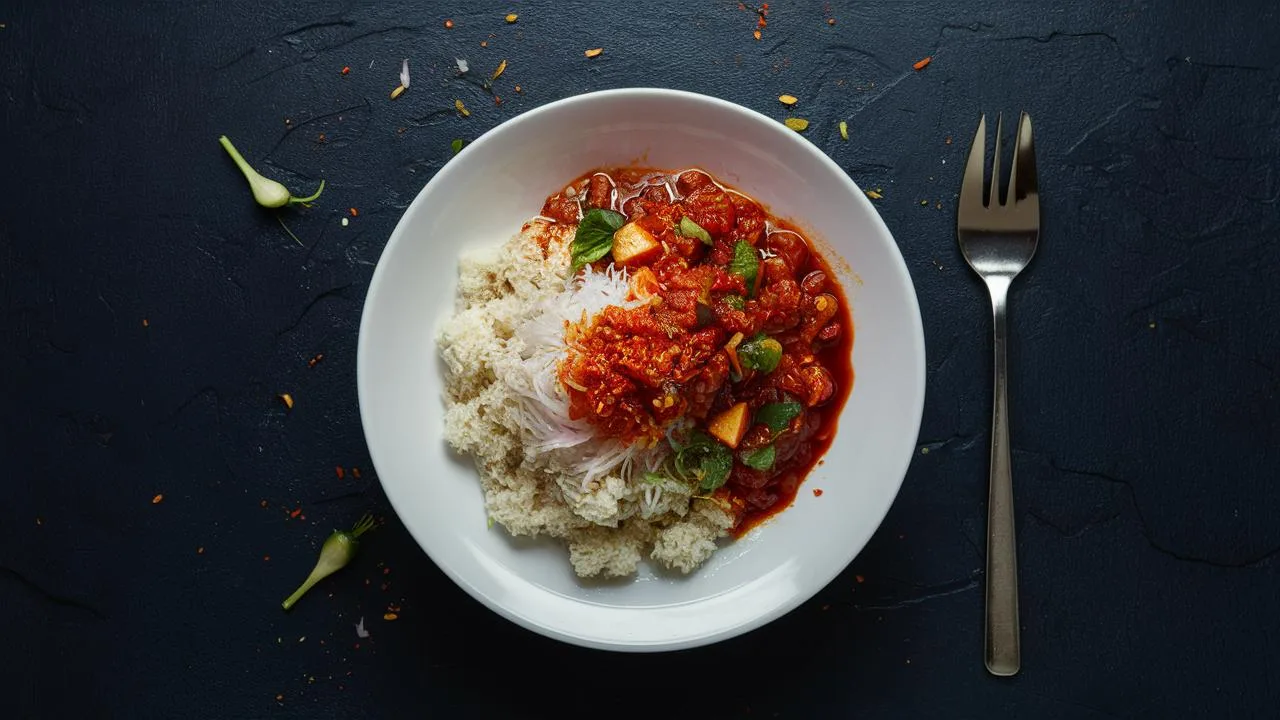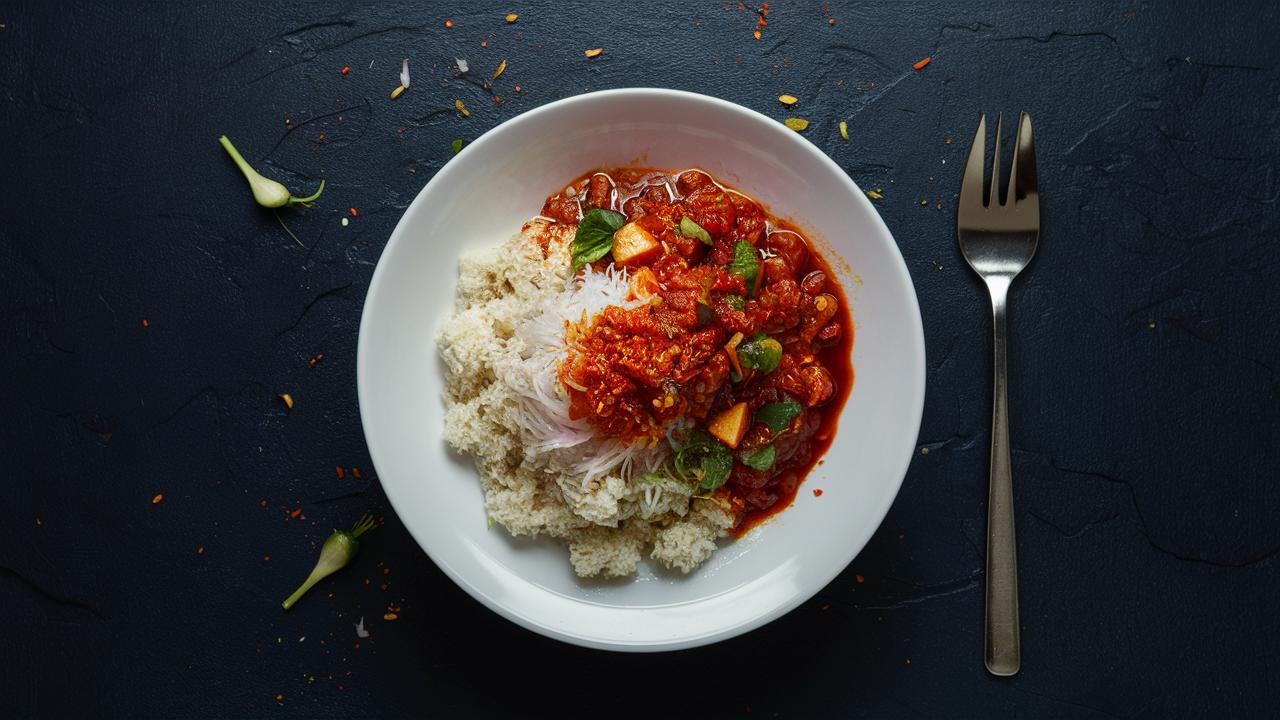Can Nasi Lemak be made vegetarian?
If taste buds could talk, they’d probably go on and on about the magical balance of flavors in Nasi Lemak sambal. Whether you’re a spice enthusiast or a sweetness seeker, you’ll find this fiery condiment has layers of flavors that can send your senses on an ecstatic joyride. So buckle up as we dive into the world of Nasi Lemak sambal—the spicy, the sweet, and everything in between.
The Preamble: A Dish to Unite Them All
Nasi Lemak is not just a dish in Malaysia; it’s an experience, a story, and for many, a daily ritual. considered by many as Malaysia’s unofficial national dish, Nasi Lemak is a harmonious marriage between fragrant coconut rice, crispy anchovies, toasted peanuts, fresh cucumber, and the pièce de résistance—sambal. This culinary wonder isn’t confined within Malaysian borders but is beloved across Southeast Asia and beyond.
What Is Nasi Lemak Sambal?
Sambal in the context of Nasi Lemak is a red chili paste that serves as the spicy backbone of the dish. But hold your horses; sambal isn’t a one-trick pony! It’s multifaceted—spicy, sweet, and occasionally tangy. Made primarily from chilies, the sambal is enriched with ingredients such as onions, garlic, belacan (fermented shrimp paste), tamarind, and sometimes a hint of sugar to balance its spiciness.
A Symbiotic Relationship
The sambal isn’t merely a condiment in Nasi Lemak; it’s the anchor. The spicy sweetness of sambal elevates the coconut-infused rice, balancing the rich creaminess with its robust flavors. Together, they create a symphonic taste that could very well be described as a love song to Malaysian taste buds.
History of Sambal: A Culinary Legacy
The term “sambal” hails from the Javanese word “sambel.” Its origins are as spicy and colorful as its flavors. With roots tracing back to Indonesia, sambal has been embraced and adapted throughout Southeast Asia, diversifying into numerous forms. The Malaysian version, often used in Nasi Lemak, tends to be slightly sweeter, balancing the intense heat of the chilies.
How to Make the Perfect Nasi Lemak Sambal
Preparing sambal for Nasi Lemak isn’t rocket science, but it does require passion, patience, and perhaps a tolerance for a bit of eye-watering heat!
Ingredients
- 20 red chilies (de-seeded for less heat)
- 5 cloves garlic
- 3 shallots, peeled
- 1 tablespoon belacan (fermented shrimp paste)
- 2 tablespoons tamarind juice
- 2 tablespoons sugar (balance to taste)
- Salt to taste
- 2 tablespoons cooking oil
Instructions
- Blend: Toss the chilies, garlic, and shallots into a food processor and blend until you get a smooth paste.
- Toast: In a pan, lightly toast the belacan until fragrant. Then, mix it into the chili paste.
- Cook: Heat oil in a pan and pour in the mixture. Stir continually to prevent clumping, cooking it over medium heat.
- Season: Add tamarind juice,sugar,and salt. Continue to stir until you get a thick consistency.Give it a taste test; adjust the sugar or salt if necessary.
- Finalize: Once done, your sambal will develop a rich maroon hue and a mouth-watering aroma. Let it cool before serving.
Elevating the Sambal Experience
not every sambal is created equal,and adding a personal twist can elevate the sambal experience entirely. here’s how you can jazz it up:
sweet Version
For those with a sweet tooth, consider adding more sugar or incorporating caramelized onions to intensify the sweetness without compromising the spiciness. This not only balances the dish but gives it a luscious texture.
Extra Spicy
For daredevils who love it fiery hot,adding small Thai bird chilies (cili padi) will certainly amplify the heat. Just prepare to have milk or a glass of cold water at the ready!
Regional Variations of Sambal
Given the diversity in Malaysian cuisine, it’s no surprise that sambal recipes can vary from region to region. Let’s take a spicy trip across these locales:
Penang: Sour Delight
penang’s version includes a combination of tamarind and lime juice, giving the sambal a distinct tangy twist that’s refreshing yet pungently spicy.
Kuala Lumpur: Coconut fusion
This variant often incorporates a drizzle of coconut milk for a creamier texture, beautifully complementing the coconut rice it’s served with.
Sabah: Splash of Fish Sauce
In the Borneo region, sambal takes a more complex turn by integrating fish sauce, enhancing the sambal with an umami depth that’s unmistakably fortifying.
Sambal’s Place in Modern cuisine
These days, sambal is breaking out of the confines of Nasi Lemak to glamorize burgers, pizzas, and even pastas. The infusion of sambal introduces an exotic flair that captivates international palates, making it a darling of fusion culinary experiences.
The Sambal Duel: Homemade vs. store-Bought
The age-old question: homemade sambal or store-bought? Here’s our attempt to throw light on this fiery debate.
Homemade
Nothing screams individuality like crafting sambal from scratch. For those who enjoy spending time in the kitchen, homemade sambal allows for the customization of spiciness, sweetness, and texture. Plus, the process boasts an artisanal charm, transforming kitchen labor into leisurely pleasure.
Store-Bought
It’s easy to frown upon the store-bought variety, but commercial sambal is convenient, consistent, and frequently enough surprisingly tasty. It’s a time-saver for those who might lack the inclination or time to create sambal from scratch.
Conclusion: The Yummy Culmination
Nasi Lemak sambal is spicy, sweet, and so much more; it represents the thriving tapestry of flavors that is Malaysian cuisine. While sambal may come in multiple variants, its core essence remains untouched—a dynamic burst of flavors that transforms the simple into the impressive. The heart of nasi Lemak, sambal, with all its versatility and flair, triumphs as a culinary marvel that provides a spicy getaway in every bite.
So whether you enjoy crafting your sambal or prefer the quick reach of a jar from a store, one thing remains clear: Nasi Lemak wouldn’t be Nasi Lemak without this sensational sambal!


